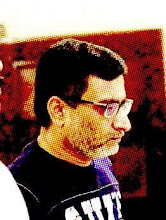Art of India, particularly the ancient South Indian Art, is synonymous with sculpture. Gods, Goddesses, Temples, Dancers, Door guardians, Commoners, Horses, Elephants and several mythical Animals, and others talk to us directly in the beautiful medium of Stone as well as metal.
Hundreds of years have passed, in fact more than a thousand years have passed, since these wonders were made by master sculptors. The sculptors have gone, their Kings vanished, their homes, palaces, and even their cities exist no more, yet this magical essays and poems cast in stone have lived long enough to tell us the tales.
In the 40s and 50s, the most popular weekly magazine in the South, the Anadha Vikatan, began a fantastic series on the sculptures of the South. The mammoth task was taken up by the brilliant Pen and Ink artist P. M. Sreenivasan, rightly known as Silpi (Sculptor). For the next decade he traveled the breadth and width of the land of Temples, and made 1000s of sketches in indelible Indian ink, on location!
Silpi was an inspiration for me decades ago, when I was a kid, and had taken a liking to drawing. every little picture that would appear here and there would become a treasure, and I would keep them very safely. His drawings had a magical appeal, they reflected the realistic dimensions of the sculptures, with full of vigor and life produced by his brisk strokes which today reminds me of likes of Charles Dana Gibson, and Heinrich Kley.
After years of waiting, there is a fabulous treat for this New Year. Vikatan Media has published a massive two volume collection of the entire series titled தென்னாட்டு செல்வங்கள் (Treasures of South India) in a beautiful Hardbound format. Apart from the fine pen and ink work, this series included some of the best paintings of the Gods, which adore almost every house hold. The book contains this collection as well!
One can see the mastery of the art, be it the form or the gesture, there is grace that goes beyond realism, and connects the viewer in a mystical manner.
The series takes us on a visual tour of several ancient cities that has very rich history that goes back thousands of years.
Beginning at Madurai, some of the several places that are covered include Darasuram, Kanchipuram, Tanjavur, Chidambaram, Srirangam, as well as Belur and Halebid. We get to see the grandeur of the Big Temple, The Gangai Konda Cholapuram in all its glory.
This book is a treasure. contains thousands of sculptures in 900 pages that form the two volume set. One is spellbound at the masterly strokes of Silpi, capturing the essence, elegance, grace and the spirit of the ancient works , further making it available for millions to enjoy.
Hope you got a glimpse of it by clicking on the images to view in a fuller size, I could not scan it due to the copyrighted material. Hope you get your hands on this soon before it gets sold out!














